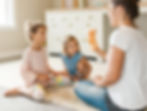More Than Just Vocabulary: The True Power of Second-Language Learning at Home
- Homeschool Languages
- Mar 21
- 4 min read
What It Means for Kids Learning a Second Language at Home

Language is more than just words—it’s a bridge to new ways of thinking, understanding, and connecting with the world. As parents teaching our kids a second language at home, we often wonder: Does learning more words actually change the way they think?
The simple answer is yes! When children learn new words, they aren’t just memorizing vocabulary; they’re absorbing new concepts, cultural perspectives, and even ways of organizing their thoughts. But does this mean a limited vocabulary restricts what they can think about? That’s where things get interesting.
The Link Between Language and Thought
You’ve probably heard the idea that language shapes thought. In George Orwell’s 1984, the government attempts to control thought by reducing the language people can use. The idea is that without the words to express complex ideas, people might struggle to think about them at all. This concept, known as the Sapir-Whorf hypothesis, suggests that language influences how we process ideas.
Some research supports this. For example, speakers of languages with distinct words for different shades of blue—like Russian—are quicker to differentiate those colors than English speakers. Another study found that an Aboriginal community in Australia, whose language relies entirely on cardinal directions (north, south, etc.) rather than left and right, has an extraordinary sense of spatial orientation.
But while vocabulary may influence how we process information, it doesn’t necessarily limit our ability to think about certain things.
Dr. Stephen Krashen, a linguist and leading researcher in second-language acquisition, emphasizes that, "We acquire language when we understand messages, when we understand what people tell us and when we understand what we read." This highlights the idea that language learning isn’t just about memorizing words—it’s about meaningful engagement with ideas.
Can Kids Think Without Words?

Let’s bring this idea into second-language learning. Imagine a child learning Spanish and encountering the word sobremesa, which describes the time spent lingering at the table after a meal, enjoying conversation. English doesn’t have a direct equivalent—but that doesn’t mean English speakers can’t experience it. They simply didn’t have a word for it before!
I remember when my own child learned mañana for the first time. He was about four years old and would keep asking me, "Is mañana soon? Is mañana after now?" To him, time was a fluid concept, but suddenly, he had a new way to express something he had been feeling all along. That word gave him clarity, and I saw firsthand how language doesn’t just reflect our thoughts—it helps shape them.
Similarly, English doesn’t have a single word for the feeling of joy at someone else’s misfortune, but German does (schadenfreude). Does that mean English speakers can’t feel it? Of course not!
Bilingual homeschooling advocate and author Rita Rosenback puts it beautifully: "Every new language is another way of seeing the world."
Learning a new word doesn’t just add to a child’s vocabulary—it deepens their ability to perceive, reflect, and understand.
Why Vocabulary Matters in Second-Language Learning
Linguist Benjamin Lee Whorf once wrote, "Language shapes the way we think, and determines what we can think about." While modern research suggests this is only partially true, there’s no doubt that language learning broadens a child’s world.
A child learning a second language isn’t just learning new words—they’re also developing cognitive flexibility. Research has shown that bilingual children:
Are better at problem-solving and critical thinking.
Show greater creativity and adaptability.
Have stronger memory and focus.
Develop greater empathy by understanding multiple perspectives.

This is something I see with families using our curriculum all the time. Parents tell me how their kids will suddenly start labeling things in their new language or naturally slip into using phrases without prompting. One mom shared how her child, after learning quiero (I want), started asking for snacks in Spanish—because why not? Another parent told me their kids giggled every time they said zapatos because they loved how it felt in their mouths. These aren’t just words—they’re new connections forming in their minds.
Spanish teacher and homeschool mom Anne Guarnera once said, "Giving your child the gift of a second language is giving them a gift for life." It’s true—language is a tool that keeps unfolding, providing more opportunities, deeper connections, and richer understanding of the world.
The Takeaway for Homeschool Families
So, does learning new words change how kids think? Not exactly. But it does change what they think about, how they see the world, and how they connect with others.
And that’s exactly why second-language learning is so valuable in a homeschool setting. When we teach kids a new language, we aren’t just checking off a subject for the day—we’re giving them tools to explore, think in new ways, and engage with the world beyond their own experience.
As world-renowned polyglot and educator Benny Lewis puts it, "A different language is a different vision of life."
And that’s a gift that lasts a lifetime. 💛
Curious how to make language learning a natural part of your homeschool?
Discover our curriculum at Homeschool Languages.
